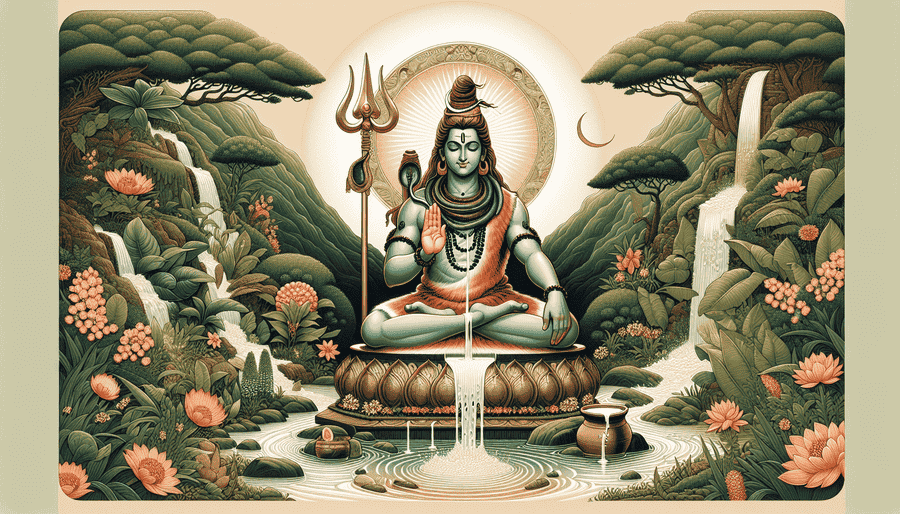Laghu Rudra Abhishek is a condensed version of the more elaborate Maha Rudrabhishek ceremony. ‘Laghu’ means small or brief, ‘Rudra’ is another name for Lord Shiva, and ‘Abhishek’ refers to the act of bathing the deity.
Origins and Significance
The ritual finds its roots in ancient Hindu scriptures, particularly the Yajurveda. It’s believed that by performing this Abhishek can:
- Cleanse negative energies
- Bring peace and prosperity
- Offer protection from harm
- Purify the mind and soul
“The Laghu Rudra Abhishek is like a spiritual reset button, allowing devotees to reconnect with the divine and themselves.”
The Preparation Process
Before the actual ritual begins, careful preparation is essential:
- Choosing an auspicious date and time
- Cleansing the puja area
- Gathering necessary items for the abhishek
Essential Items
- Shiva Lingam or Shiva idol
- Panchamrit (mixture of milk, curd, ghee, honey, and sugar)
- Gangajal (holy water from the Ganges)
- Bel leaves, flowers, and garlands
- Incense sticks and camphor
- Rudraksha mala
The Ritual Steps
1. Invocation and Meditation
The ritual begins with the priest or devotee invoking Lord Shiva through mantras and meditation. This step establishes a spiritual connection and sets the tone for the ceremony.
2. Bathing the Deity
The core of the Laghu Rudra Abhishek involves bathing the Shiva Lingam or idol with various substances:
- First with water
- Then with panchamrit
- Followed by milk, curd, honey, and ghee separately
- Finally, a bath with Gangajal
Each substance is poured while chanting specific mantras, enhancing the spiritual energy of the ritual.
3. Adornment and Offerings
After the bathing, the Shiva Lingam is adorned with:
- Bel leaves (considered very dear to Lord Shiva)
- Flower garlands
- Sandalwood paste
- Vermilion
Devotees then offer fruits, sweets, and light incense and lamps.
4. Recitation of Mantras
A crucial part of the Laghu Rudra Abhishek is the recitation of sacred mantras:
- The Rudra Suktam
- The Chamakam
- The Maha Mrityunjaya Mantra
These mantras are believed to invoke powerful blessings and protection.
Benefits of Performing Laghu Rudra Abhishek
Many devotees report experiencing profound benefits from this ritual:
- Emotional healing and stress relief
- Improved focus and clarity of mind
- A sense of spiritual cleansing
- Enhanced positive energy in their lives
“Regular performance of Laghu Rudra Abhishek can lead to a more balanced and harmonious life, both spiritually and materially.”
When to Perform Laghu Rudra Abhishek
While the ritual can be performed at any time, certain occasions are considered especially auspicious:
- During Shravan month (July-August)
- On Mondays (Lord Shiva’s day)
- During eclipses
- On Maha Shivaratri
Conclusion
Laghu Rudra Abhishek is more than just a religious ceremony; it’s a profound spiritual journey. Whether performed at a temple or home, this ritual offers devotees a chance to connect deeply with Lord Shiva and, in turn, with their inner selves.

